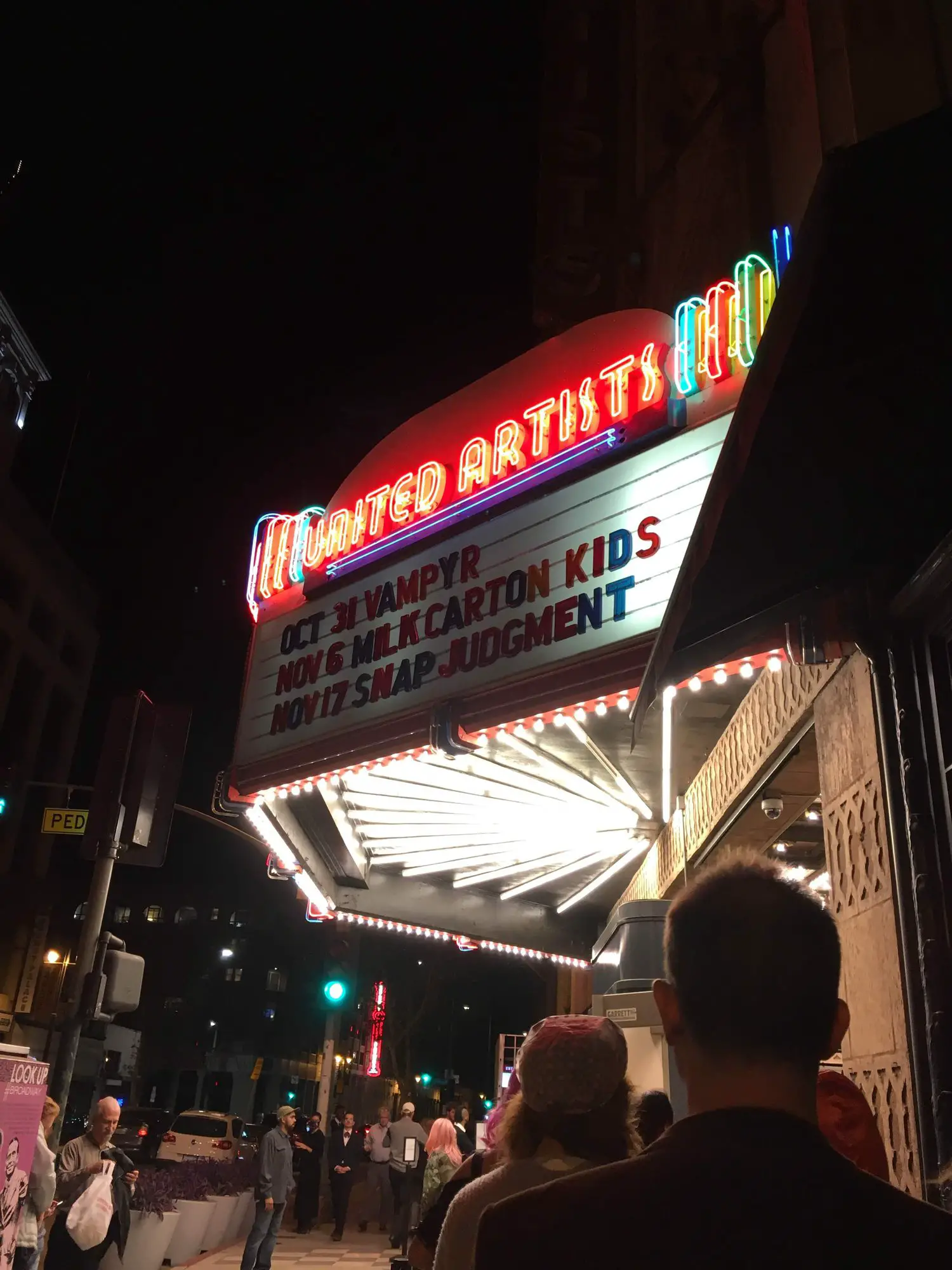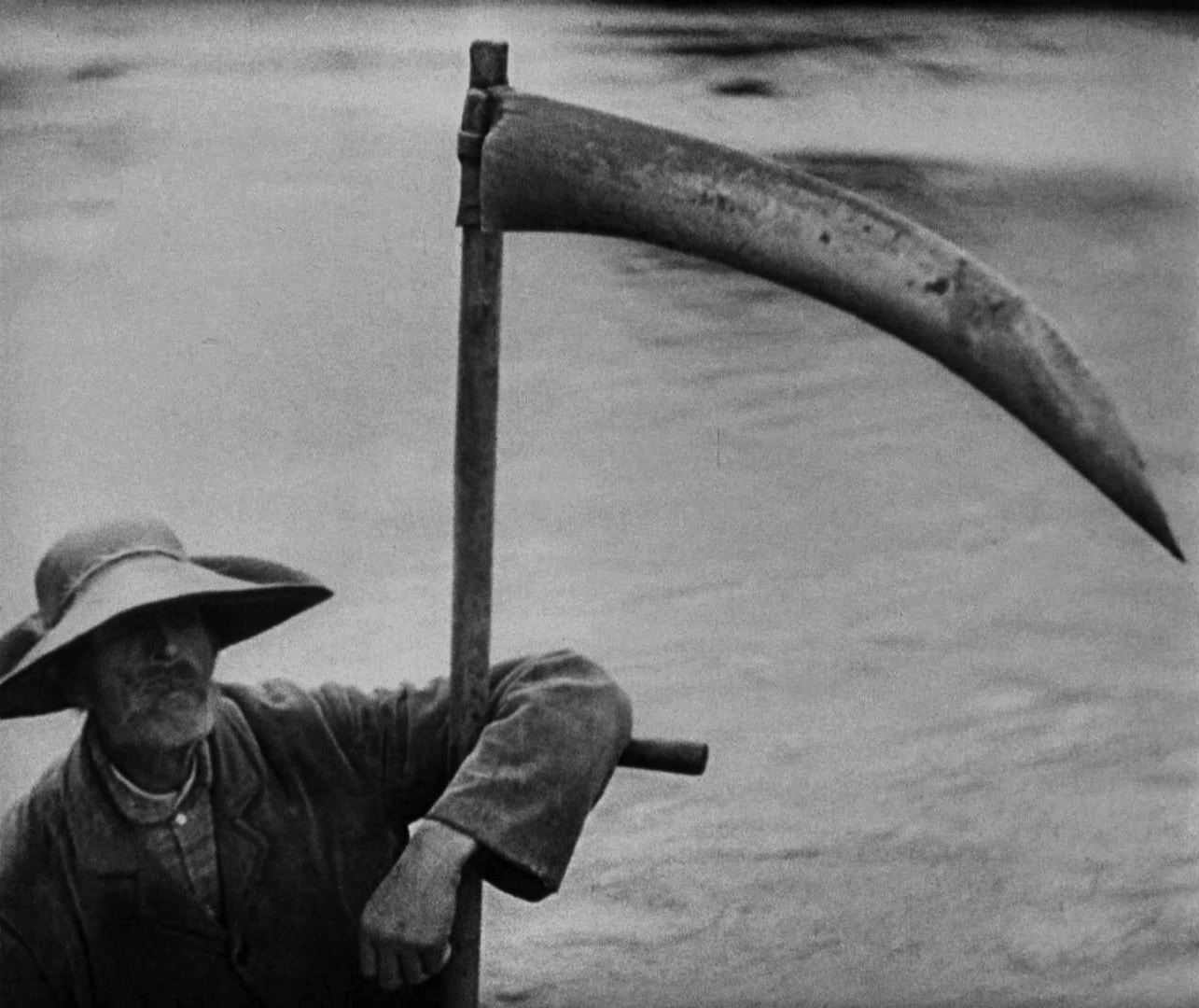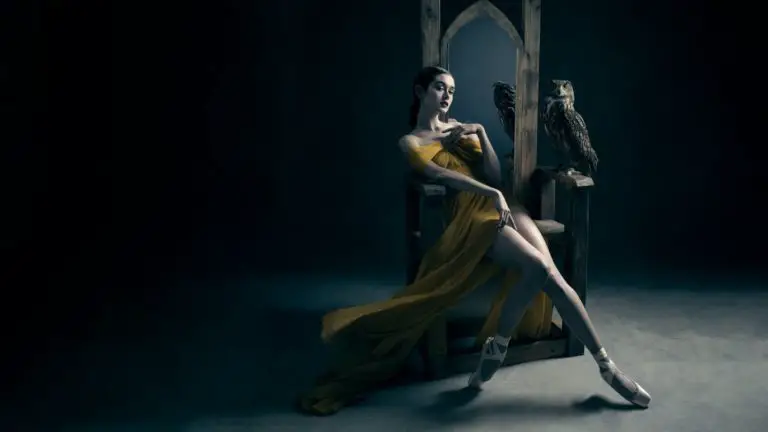The Ace Hotel on Halloween night is really hopping and bopping. There are werewolves stalking, phantom geisha gliding, specters grinning everywhere and vampires on vampires… on vampires. I thread my way through this menagerie to my seat and gawk at the pageantry around me. Dwarfing the heaving, lively crowd, a theater screen is flanked by crimson-lit chiaroscuro that brings to mind the old diablerie scenes depicting scenes from Hell in minute detail. The ornate interior of the theater evokes an atmosphere that very much supports the phantasmagoria before me. Though the environs are foreboding the mood is happy and expectant. Every undead visage around me has a smile and twinkling eyes comb the multitude and the orchestra pit. We are replete with sugar and drinks and the ritual before us promises to be a very unique experience.
The congregation has converged this evening to witness the black and white classic Vampyr augmented with an original score by composer Joby Talbot (Sing!, Psychoville, The Hitchhiker’s Guide to the Galaxy) and performed live by members of the LA Opera Orchestra. Talbot’s goal in re-scoring the film is to preserve the 80 lines or so of dialogue and let the decayed quality of them bolster the impression of age. Modernity fades away, and we come to inhabit a meditative space where reality becomes something much more fantastic. Finally, the house lights dim and the conductor, Matthew Aucoin, appears in a swirling black cloak, grinning and bowing to the appreciative applause. His baton rises and the screen and music flicker to life.
Vampyr follows the travels of Allan Grey, portrayed by Boticelli-esque Julian West, on his search for the supernatural. He reaches the isolated village of Courtempierre where shadows cavort independently of any physical source and time behaves strangely. Embroiled in a sinister mystery, Grey encounters a family under siege, daughters fall victim to a strange illness, a patriarchal murder occurs and an ancient evil that stalks the sparse town. Grey traverses rivers via ferry as reapers are repeatedly shown to articulate to the viewer the crossing from normal reality to a special realm where nothing is quite what it seems. Phantoms perform the Danse Macabre in pastoral fields and lead us the the vast estate where the plagued family resides. The sisters in peril, Gisele (Rena Mandel) and Leone (Sybille Schmitz), present bewildered virtue in the face of encroaching doom. Leone is especially striking as her mounting misery is made all the more stark set against a chilling leer, when for a moment she is overtaken. At a pivotal moment in the film, she cries “I’m afraid of dying. I am damned! My God! My God!”
Throughout the film, Grey’s eternally beatific expressions as he carefully navigates his environs seem to indicate the innocence of the pedant of the occult not yet marked by the unknown even as he runs headlong into the maw of a ravenous enigma. Perhaps he is even the Fool of the Tarot, striding forth into the world to sample everything it has to offer, for good or ill. His aural signature is the lone human voice of the orchestra, mezzo-soprano, Taylor Raven. This touch serves to subconsciously pull the viewer into the narrative more firmly. Without this subtle corporeal/auditory tie, it would be easy to become lost in the mostly wordless dread. This dreamer of a character pursues evil in the realm of a village where tragedy permeates the streets. A terrible, hidden truth stalks him and the family that has taken him under its wing. The orchestra punctuates the pervasive disorientation and anxiety with the surprising efficacy of the accordion (Samantha Wagner).
Today, the 1932 film could be taken for the early work of David Lynch. Existing in the liminal boundary of dream and horror, Vampyr treads the experimental and narrative devices that still combine to haunting effect. Despite the loss of the original soundtrack and a large amount of footage, a resuscitated 1998 print by the Criterion Collection allows us to enjoy this story anew. Similarly innovative, the LA Opera has taken this ethereal memory and resuscitated it for a modern audience. The delicate original score and mindful presentation invite the viewer to join the village as a phantom observer with the tangible vibrations. We join Grey in creeping through the abandoned streets pulled inexorably as he with the dulcet strings and woodwinds. In this singular collaboration of composer, the LA Opera and the enthusiastic investment of the audience has successfully revived a distant film and made it relevant and pleasantly compelling to the contemporary theater-goer, from cinephile to morbid culture maven.
In conclusion, the LA Opera demonstrates that there are rich experiences worth exhuming in the past. Taking the time to disinter a fragment and illuminate it with care can lend new life that can benefit audiences everywhere. This performance of Vampyr illustrates that forgotten wraiths are sometimes capable of infusing us with wonder and appreciation when handled by skilled necromancers.
To keep up to date with the newest performances of the LA Opera, you can follow their calendar at LAOpera.org. You can also follow them on Instagram, Twitter, Facebook, and via video clips on Youtube.








